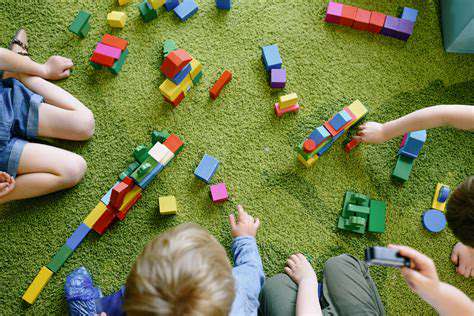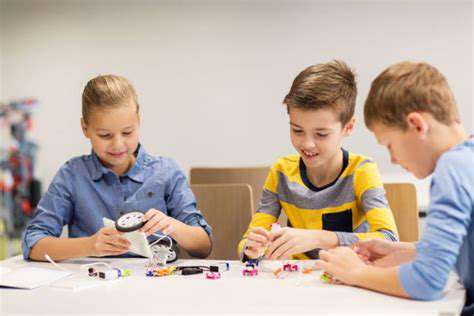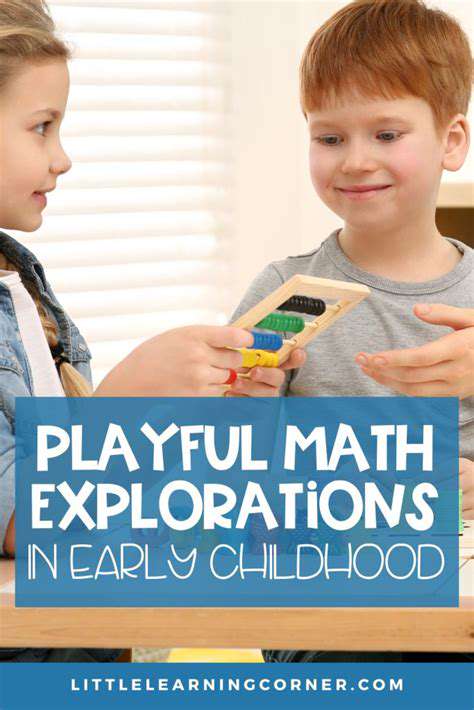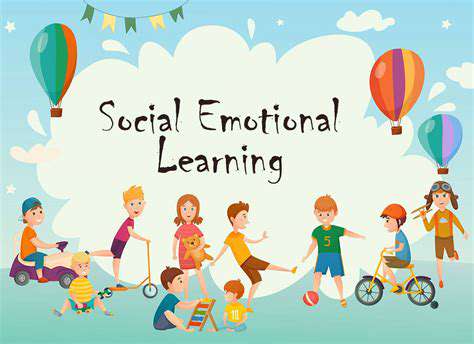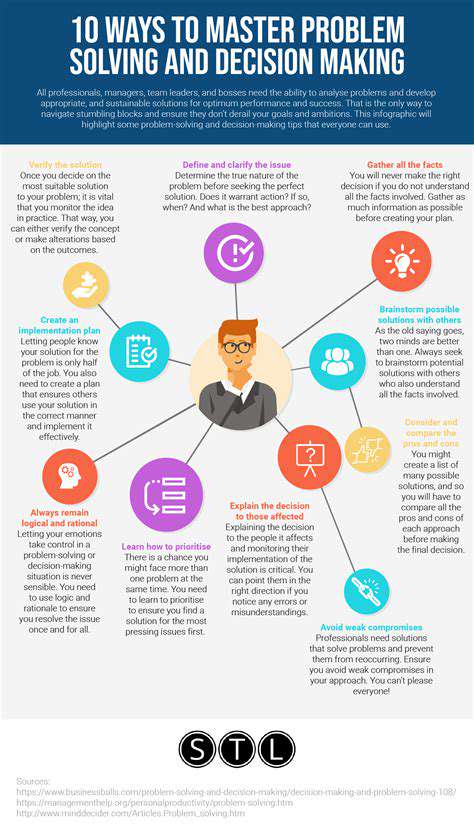Positive Self Talk in Children: Building Resilience and Optimism
Identifying and Addressing Negative Self-Talk Patterns
Understanding the Roots of Negative Self-Talk
Negative self-talk, a common experience for many children, often stems from a combination of factors. These can include past experiences, like criticism from parents or peers, or even perceived failures in school or social situations. Children may internalize these messages, leading them to develop a critical inner voice that consistently points out their flaws and shortcomings. Identifying these underlying causes is crucial for addressing the problem effectively, as it helps to pinpoint the root of the negativity and allows for tailored interventions.
Furthermore, a child's environment can significantly impact their self-perception. Exposure to negative role models or a consistently stressful home environment can contribute to a negative self-image. Understanding how these environmental factors play a part is essential in developing strategies for change.
Recognizing the Different Forms of Negative Self-Talk
Negative self-talk isn't always obvious. It can manifest in various forms, ranging from subtle self-criticism to more overt pronouncements. A child might berate themselves for making a mistake, or they might continuously compare themselves unfavorably to others. Other forms include catastrophizing (I'll fail this test, my life is over.), or engaging in self-sabotaging behaviors to avoid perceived challenges.
Recognizing these different forms is vital for effective intervention. Parents and educators need to be aware of the subtle cues and verbal patterns that may indicate negative self-talk, allowing for early intervention and support.
The Impact of Negative Self-Talk on Child Development
The consistent barrage of negative self-talk can have a profoundly detrimental effect on a child's emotional and mental well-being. It can lead to feelings of inadequacy, anxiety, and depression. This can manifest in various ways, impacting their social interactions, academic performance, and overall sense of self-worth. A child struggling with negative self-talk may become withdrawn, avoid challenges, or develop coping mechanisms that are unhealthy in the long run.
Strategies for Identifying and Addressing Negative Self-Talk
A crucial step in addressing negative self-talk is actively listening to the child's inner dialogue. Encouraging them to express their thoughts and feelings can help them become aware of their negative self-talk patterns. Parents and educators can use reflective listening techniques to validate their concerns and offer support.
Additionally, providing positive reinforcement and highlighting achievements, no matter how small, can help counterbalance the negative messages. Focus on effort and progress rather than just outcomes. This approach fosters a more positive self-image and encourages a growth mindset.
Promoting Positive Self-Talk as a Replacement
Replacing negative self-talk with positive affirmations is a vital aspect of intervention. Teaching children to reframe negative thoughts into more constructive and realistic ones is crucial. This involves helping them identify the negative thought, challenge its validity, and replace it with a positive alternative. This process strengthens their self-esteem and fosters resilience. Role modeling positive self-talk by adults in their lives also plays a vital role.
Creating a Supportive Environment for Positive Self-Image
A supportive and nurturing environment is essential for helping children develop a healthy sense of self-worth. This includes fostering open communication, encouraging emotional expression, and celebrating individual strengths. By creating a safe space where children feel comfortable expressing themselves without judgment, we empower them to build a positive self-image and develop healthy coping mechanisms for dealing with challenges.
Parents and educators play a crucial role in modeling healthy self-talk and creating a positive environment where children feel safe to challenge negative thoughts and embrace their strengths.
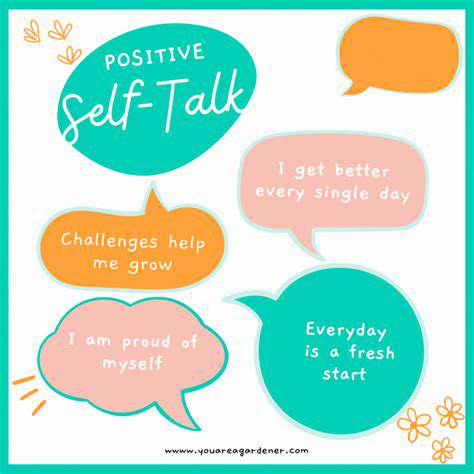
Practical Exercises to Boost Positive Self-Talk
Identifying Negative Self-Talk Patterns
Children, like adults, often engage in negative self-talk without realizing it. This internal dialogue can manifest in various forms, from harsh criticism to self-doubt. Recognizing these patterns is the first step toward changing them. For example, a child might tell themselves, I'm so stupid, I can't do this, after struggling with a math problem. Identifying these negative statements, whether verbalized or internalized, is crucial to replacing them with more positive and constructive thoughts.
It's important to help children understand that these negative thoughts are not reflections of their inherent worth. Instead, they are often reactions to specific situations or feelings of frustration. By acknowledging these patterns, children can start to challenge and reframe their negative self-talk.
Challenging Negative Self-Statements
Once children recognize negative self-talk, they need strategies to challenge it. This involves encouraging them to question the validity of those statements. Is it really true that I'm stupid? is a crucial question to ask. Helping children to understand that these negative thoughts might be influenced by fear or anxiety is also essential. Encourage them to consider alternative perspectives. Perhaps there are other ways to look at the situation that are more helpful and accurate.
Use examples and relatable scenarios to guide children through this process. For instance, if a child says, I'm always clumsy, encourage them to think about specific instances of clumsiness and whether those instances accurately represent their overall ability. Help them to see that even people who are generally considered coordinated can sometimes stumble.
Developing Positive Self-Affirmations
Positive self-affirmations are statements that reinforce a child's strengths and abilities. Crafting these affirmations together is a powerful way to build self-esteem. Instead of focusing on what a child *can't* do, these statements highlight what they *can* do, emphasizing their resilience and potential. For example, instead of saying You're not good at math, say You are a hard worker, and you'll get better at math with practice. These affirmations should be tailored to the child's specific strengths and areas for improvement.
Encourage children to create their own affirmations. This empowers them to take ownership of their positive self-image. Make these affirmations specific, achievable, and realistic. Repeating these affirmations regularly can help reinforce positive self-talk patterns.
Practicing Self-Compassion
Self-compassion is a crucial element in fostering positive self-talk. It involves treating oneself with kindness and understanding, especially during challenging times. Help children understand that making mistakes is a normal part of learning and growing. Encourage them to acknowledge their feelings of frustration or disappointment without judgment. This approach cultivates a more nurturing and supportive inner dialogue. Remind them that everyone struggles sometimes, and that it's okay to feel those emotions without letting them define their worth.
Using Visual Aids and Role-Playing
Visual aids, such as charts or posters, can be incredibly helpful in reinforcing positive self-talk. These can visually represent the process of challenging negative thoughts and developing positive affirmations. Role-playing scenarios where children practice expressing themselves confidently and kindly to themselves can be particularly effective. Engaging in these activities helps children internalize these strategies and apply them in real-life situations. Creating a visually appealing and interactive environment can boost the effectiveness of these exercises.
Encouraging a Growth Mindset
Cultivating a growth mindset is essential for fostering positive self-talk. This involves emphasizing the importance of effort, learning from mistakes, and embracing challenges as opportunities for growth. Help children understand that intelligence and abilities are not fixed traits but can be developed through dedication and perseverance. Encourage a focus on the process of learning rather than solely on outcomes. This approach promotes a positive attitude towards challenges and setbacks, making positive self-talk more sustainable and impactful in the long run.


